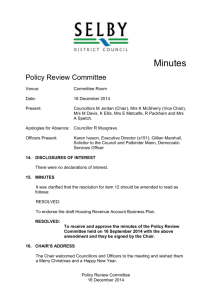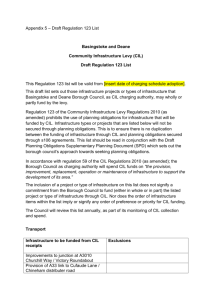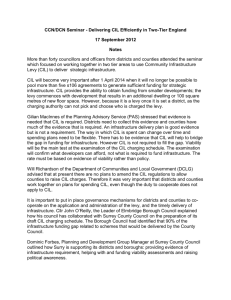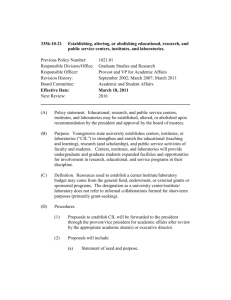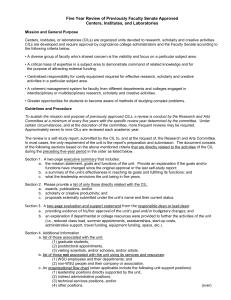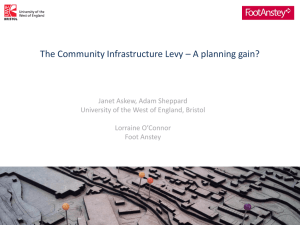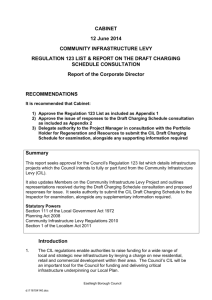Selby District Council Community Infrastructure Levy 2014 (CIL
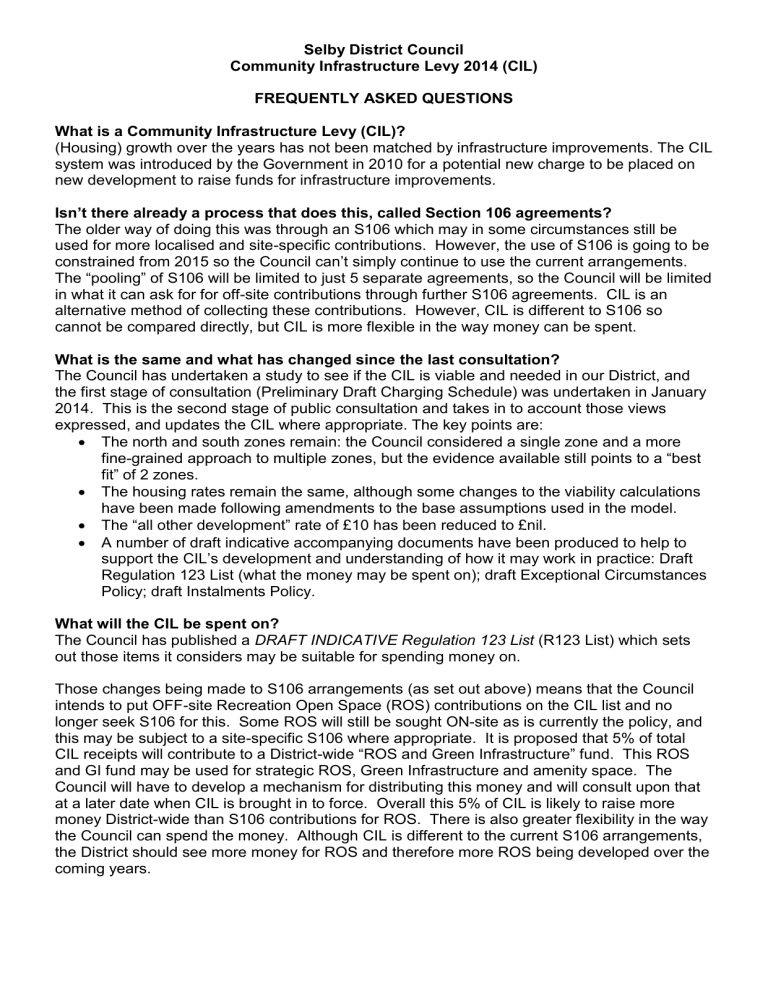
Selby District Council
Community Infrastructure Levy 2014 (CIL)
FREQUENTLY ASKED QUESTIONS
What is a Community Infrastructure Levy (CIL)?
(Housing) growth over the years has not been matched by infrastructure improvements. The CIL system was introduced by the Government in 2010 for a potential new charge to be placed on new development to raise funds for infrastructure improvements.
Isn’t there already a process that does this, called Section 106 agreements?
The older way of doing this was through an S106 which may in some circumstances still be used for more localised and site-specific contributions. However, the use of S106 is going to be constrained from 2015 so the Council can’t simply continue to use the current arrangements.
The “pooling” of S106 will be limited to just 5 separate agreements, so the Council will be limited in what it can ask for for off-site contributions through further S106 agreements. CIL is an alternative method of collecting these contributions. However, CIL is different to S106 so cannot be compared directly, but CIL is more flexible in the way money can be spent.
What is the same and what has changed since the last consultation?
The Council has undertaken a study to see if the CIL is viable and needed in our District, and the first stage of consultation (Preliminary Draft Charging Schedule) was undertaken in January
2014. This is the second stage of public consultation and takes in to account those views expressed, and updates the CIL where appropriate. The key points are:
The north and south zones remain: the Council considered a single zone and a more fine-grained approach to multiple zones, but the evide nce available still points to a “best fit” of 2 zones.
The housing rates remain the same, although some changes to the viability calculations have been made following amendments to the base assumptions used in the model.
The “all other development” rate of £10 has been reduced to £nil.
A number of draft indicative accompanying documents have been produced to help to support the CIL’s development and understanding of how it may work in practice: Draft
Regulation 123 List (what the money may be spent on); draft Exceptional Circumstances
Policy; draft Instalments Policy.
What will the CIL be spent on?
The Council has published a DRAFT INDICATIVE Regulation 123 List (R123 List) which sets out those items it considers may be suitable for spending money on.
Those changes being made to S106 arrangements (as set out above) means that the Council intends to put OFF-site Recreation Open Space (ROS) contributions on the CIL list and no longer seek S106 for this. Some ROS will still be sought ON-site as is currently the policy, and this may be subject to a site-specific S106 where appropriate. It is proposed that 5% of total
CIL receipts will contribute to a Districtwide “ROS and Green Infrastructure” fund. This ROS and GI fund may be used for strategic ROS, Green Infrastructure and amenity space. The
Council will have to develop a mechanism for distributing this money and will consult upon that at a later date when CIL is brought in to force. Overall this 5% of CIL is likely to raise more money District-wide than S106 contributions for ROS. There is also greater flexibility in the way the Council can spend the money. Although CIL is different to the current S106 arrangements, the District should see more money for ROS and therefore more ROS being developed over the coming years.
How much is the levy?
The levy is charged on new development in the following categories:
Use Proposed CIL Charge per sq. m
Private market houses (excl. apartments)
Low value areas
All other areas
Supermarkets
Retail Warehouse
£25
£45
£110
£60
Public/Institutional facilities as follows: education, health, community and emergency services
£0
All other chargeable development (incl. apartments) £0
Proposed Residential Charging Zone:
Higher charge zone
– Appleton Roebuck,
Cawood with Wistow, Monk Fryston and
South Milford, North Duffield, Riccall with
Escrick, Saxton and Ulleskelf, Sherburn in
Elmet, Tadcaster East and Tadcaster West.
Lower charge zone - Barlby, Brayton,
Camblesforth, Eggborough, Fairburn with
Brotherton, Hambleton, Hemingbrough,
Selby North, Selby South, Selby West and
Whitley.
Can I find out more and have my say?
This Draft Charging Schedule is the subject of consultation starting 14 July and ending on 18 September 2014. Additional detail is available on the Council’s website www.selby.gov.uk/CIL . Information is also available at the Council’s Access Selby
Office and at local libraries. Representations on the CIL Draft Charging Schedule can be made in writing to: CIL Consultation Policy & Strategy Team, Selby District Council, Civic
Centre, Doncaster Road, Selby, YO8 9FT. Alternatively comments may be sent by email to ldf@selby.gov.uk
(using CIL consultation in the subject bar). All representation must be submitted by the 5pm on 18 th September 2014 .
Organisations and individuals making representation may request to be heard at any related
Examination in Public, and/or to be notified, at a specified address of any of the following;
- That the Draft Charging Schedule has been submitted to the examiner
- The publication of the recommendation of the examiner and the reasons for those recommendations
- The approval of the Charging Schedule by the Council
Representation must include contact details. Please note that your comments cannot be treated as confidential, and that your personal/contact details may be published alongside your comments.
For more information please contact the Policy and Strategy Team on 01757 705101

